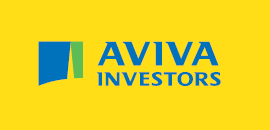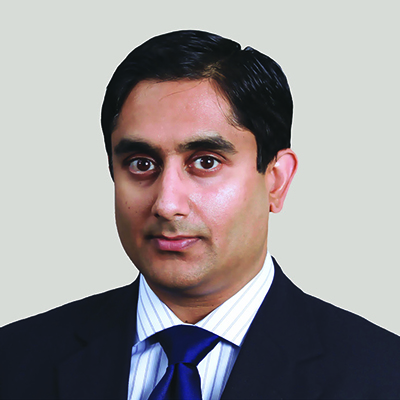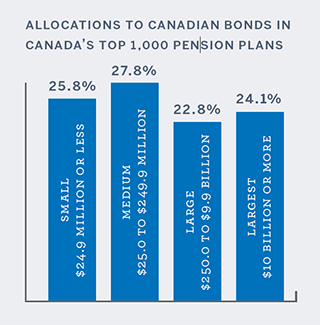When institutional investors contemplate moving from Core to Core Plus Canadian fixed-income strategies, they seek greater return potential but can frequently encounter a much higher risk profile. We asked Sunil Shah, Head of Canadian Fixed Income at Aviva Investors, about the value of active management in this asset class, and how his team constructs Canadian fixed-income portfolios for both Core and Core Plus strategies.

“For those investors that are comfortable with a higher-thancore risk profile, we are able to create and leverage this same approach with an even greater return potential.SUNIL SHAH, CFA
HEAD OF CANADIAN FIXED INCOME, AVIVA INVESTORS
IN YOUR EXPERIENCE, WHAT ARE INSTITUTIONAL INVESTORS LOOKING FOR FROM A CANADIAN FIXED-INCOME MANAGER?
Many plan sponsors are looking for three outcomes: compelling long-term investment returns relative to a prescribed benchmark over the long term; a risk profile that protects in down markets and is less correlated to market direction than the peer group; and a yield curve and duration profile similar to a reference index such as the FTSE TMX Canada Universe Bond Index. At Aviva Investors, we focus on creating solutions that can help satisfy all three outcomes for our investors.
WHY IS ACTIVE MANAGEMENT IMPORTANT TO ACHIEVE FIXED-INCOME INVESTING GOALS?
In the current environment of low yields and low returns, active management aims to capitalize on the relatively inefficient nature of bond markets to outperform the index while maintaining a strong focus on risk management. Going forward, as central bank policy rates normalize and government bond yields rise, we believe active management will play an even more important role. It also helps mitigate the risks and biases associated with choosing any one fixed-income reference index or benchmark, and seeks to provide risk-adjusted outperformance.
WHAT OPPORTUNITIES DO INSTITUTIONAL INVESTORS HAVE TO IMPROVE FIXED-INCOME RETURN POTENTIAL WITHOUT APPRECIABLY INCREASING RISK EXPOSURE?
One approach is to broaden the opportunity set by adding investment options outside a given market index – for example, exposure to other sectors, issuers and yield curve options. This can generate excess return potential and reduce risk through diversification. The Canadian bond index suffers from poor issuer and sector diversity, so being able to choose from alternative global investment-grade credit issuers and sectors is a real benefit to Canadian portfolios. That said, many asset managers add out-of-index investment exposure by simply allocating to several different fixed-income strategies. We would argue that this type of “bolt-on” approach can actually negate the benefit of adding out-of-index investments, as exposure to other markets in this fashion can add unintended risk and elevate a portfolio’s overall beta exposure. We believe it’s more effective to build a holistic Canadian Core Plus portfolio in a fully integrated manner that incorporates our highest-conviction ideas from a broader opportunity set.
WHAT QUESTIONS SHOULD INSTITUTIONAL INVESTORS ASK IN CHOOSING A CANADIAN CORE PLUS STRATEGY/MANAGER?
There are several important questions institutional investors should explore with managers. First, is the goal to hedge plan liabilities by achieving a return profile that is largely consistent with the Canadian bond index? What incremental return does the investor expect to achieve over a traditional Canadian Core strategy, and what type and amount of excess risk (if any) is acceptable? Is the investor comfortable with a strategy that may include alternative currencies, commodities, equities and private placements? Does the manager under consideration have a strong understanding of Canadian markets, boots on the ground in Canada, and a strong track record in managing a successful Canadian Core strategy? Does the manager have access to the depth and breadth of a large global investment team from which to draw the best ideas into the portfolio? What importance does the manager place on portfolio construction, and how does the manager embed risk management into the investment process?
HOW DO YOU BLEND QUANTITATIVE ANALYSIS AND HUMAN JUDGMENT TO MAKE INVESTMENT DECISIONS?
Human or qualitative judgment represents both the starting and end points of portfolio construction in our actively managed portfolios. Research and analysis of broad investment themes and individual sector and issuer ideas embody the element of creativity within portfolio management. Quantitative analysis helps us weave together diverse investment ideas into a cohesive portfolio strategy. It’s impossible for a portfolio manager to comprehend correlations, risks and biases within a portfolio without using quantitative tools. Quantitative analysis also helps with stress testing and with creating a portfolio that performs well in the manager’s central macroeconomic scenario, but doesn’t perform poorly should that scenario not materialize.
HOW DO YOU INTEGRATE INSIGHTS FROM TEAMS AROUND THE WORLD TO CREATE AN INVESTMENT THESIS?
To capture the best ideas and insights across the world, every member of Aviva Investors’ global investment team is able to contribute to the major investment themes that form the basis of our firm’s quarterly HouseView. Key to this is establishing an investment framework that enables effective communication of an investment idea. At Aviva Investors, we use the Macro, Fundamentals, Valuations, Technicals, Recommendation (MFVTR) framework. Also critical is a commitment from the top — in our case, from Aviva Investors’ CEO Euan Munro — to empower and integrate the global investment team and their views, to benefit all investment portfolios.
CANADIAN FIXED-INCOME PERFORMANCE MATTERS
Canada’s top 1,000 pension plans invest an average of 24.1% of their assets in Canadian bonds, making the impact of a potential incremental return advantage significant for plan sponsors and their members.

WHAT DIFFERENTIATES YOUR APPROACH TO CANADIAN CORE PLUS FIXED-INCOME VERSUS CANADIAN CORE FIXED-INCOME?
Very little, and that is entirely by design. We believe a sound Canadian Core Plus strategy should follow a consistent investment process to a Canadian Core strategy to achieve a similar risk profile but with greater return potential through a broader opportunity set. For those investors that are comfortable with a higher-than-core risk profile, we are able to create and leverage this same approach with an even greater return potential. Accordingly, we run two types of Canadian Core Plus strategies at Aviva Investors: one that includes high-yield securities, and one that doesn’t.
WHERE ARE YOU FINDING INTERESTING FIXED-INCOME INVESTING OPPORTUNITIES IN TODAY’S ENVIRONMENT?
Recently, a number of non-financial corporations outside Canada have issued Canadian dollar investment-grade bonds through the Maple market. Historically, Maple market issuance was dominated by U.S. financial institutions, so this represents a meaningful change. What makes it very interesting for Aviva Investors is that, as a global investment firm, we have the breadth and depth to generate views on these firms before they are issued in the Canadian market. This capacity helps us determine how to integrate these out-of-index issues into our Canadian Core and Canadian Core Plus portfolios to enhance return potential and seek to reduce risk for clients.
Source: The data in this article is based on the top 1,000 pension plans, collected from March 1, 2017 to September 30, 2017 (and previous five years), with an accounting year-end date of December 31, 2016, through the Canadian Institutional Investment Network (CIIN) database.
Important information:
Except where stated as otherwise, the source of all information is Aviva Investors Canada, Inc. (“AIC”) as
of October 31, 2017. Unless stated otherwise any views, opinions and future returns expressed are those of
Aviva Investors and based on Aviva Investors internal forecasts. They should not be viewed as indicating any
guarantee of return from an investment managed by Aviva Investors nor as advice of any nature. The value
of an investment and any income from it may go down as well as up and the investor may not get back the
original amount invested. Past performance is not a guide to future returns.
AIC is located in Toronto and is based within the North American region of the global organization of
affiliated asset management businesses operating under the Aviva Investors name. AIC is registered with the
Ontario Securities Commission (“OSC”) as a Portfolio Manager, and an Exempt Market Dealer.
Aviva Investors is a global asset management firm comprised of a group of affiliated companies, each of which
is regulated in the jurisdiction in which it operates. Each Aviva Investors affiliate is a subsidiary of Aviva plc,
a publically traded multi-national financial services company headquartered in the United Kingdom (UK).
There are risks associated with all investments and those risks may be higher for strategies investing in
alternative, derivatives and small cap asset classes.




